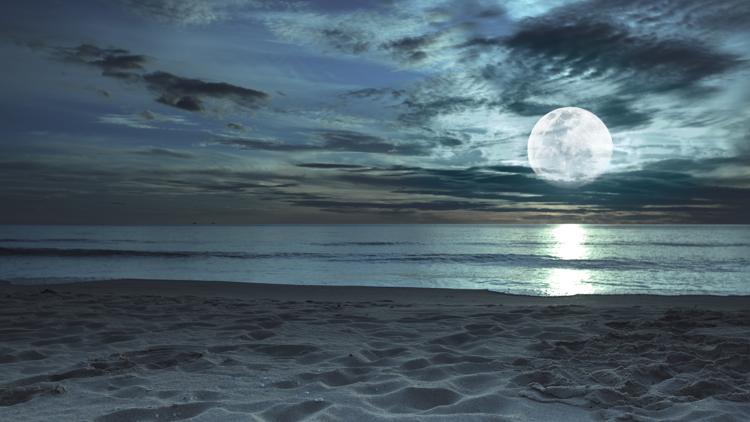CLEVELAND — It's that spring break time of year for a lot of you.
So many of you may be sun bathing on your favorite beach, reading a good book, looking for that perfect seashell, all while watching those soothing ocean waves. You can feel them crash against your feet right now, can't you? Sitting in your beach chair, watching the ocean rhythm as it changes throughout the day. You gaze at kids tossing around a football and make sand castles. It's therapeutic.
I have a fun fact for you. You ready for this?
The tide does not come in and out. You heard me. Nope. Not at all.
The NOAA (National Oceanic and Atmospheric Administration) states that "high tides and low tides are caused by the moon. The moon's gravitational pull generates something called the tidal force. The tidal force causes Earth — and its water — to bulge out on the side closest to the moon and the side farthest from the moon. These bulges of water are high tides."
NOAA goes on to explain that "as the Earth rotates, your region of Earth passes through both of these bulges each day. When you're in one of the bulges, you experience a high tide. When you're not in one of the bulges, you experience a low tide. This cycle of two high tides and two low tides occurs most days on most of the coastlines of the world."
It's a complicated thought, for sure, which the NOAA tries to simplify.
"High and low tides are caused by the moon," the administration confirms. "The moon's gravitational pull generates something called the tidal force. The tidal force causes Earth—and its water—to bulge out on the side closest to the moon and the side farthest from the moon. These bulges of water are high tides.”
Confused yet? You may be asking yourself, "If the moon's gravity is pulling the oceans toward it, how can the ocean also bulge on the side of Earth?
"It's all because the tidal force is generated from differences in gravity over the Earth's surface," NOAA answers.
How does that happen? Per the NOAA:
"On the side of Earth that is directly facing the moon, the moon's gravitational pull is the strongest. The water on that side is pulled strongly in the direction of the moon. On the side of Earth farthest from the moon, the moon's gravitational pull is at its weakest. At the center of Earth is approximately the average of the moon's gravitational pull on the whole planet. To get the tidal force — the force that causes the tides — you subtract this average gravitational pull on Earth from the gravitational pull at each location on Earth. The result of the tidal force is a stretching and squashing of Earth. This is what causes the two tidal bulges.
Dr. Neil deGrasse Tyson, the famous American astrophysicist, author, and science communicator puts a really fun spin on his explanation of the tides.
"There are two bulges of water on opposite sides of the Earth caused by the sun and moon," he says. "Earth turns inside the bulge. We are rotating into the bulge and then out of it when we say the water rises and falls. The bulge is already there. We pass through it. We use language from our perspective, rather than what’s actually happening because it's easier."
Think about it: It's simpler to say the water goes in and out.
"It's way easier to say the sun set instead of saying the earth rotated such that our angle of view on the stationary sun fell below our local horizon," Tyson emphasizes.
And he's right. It is. Definitely something to think more "deeply" about the next time you hit the beach!
Sources:



